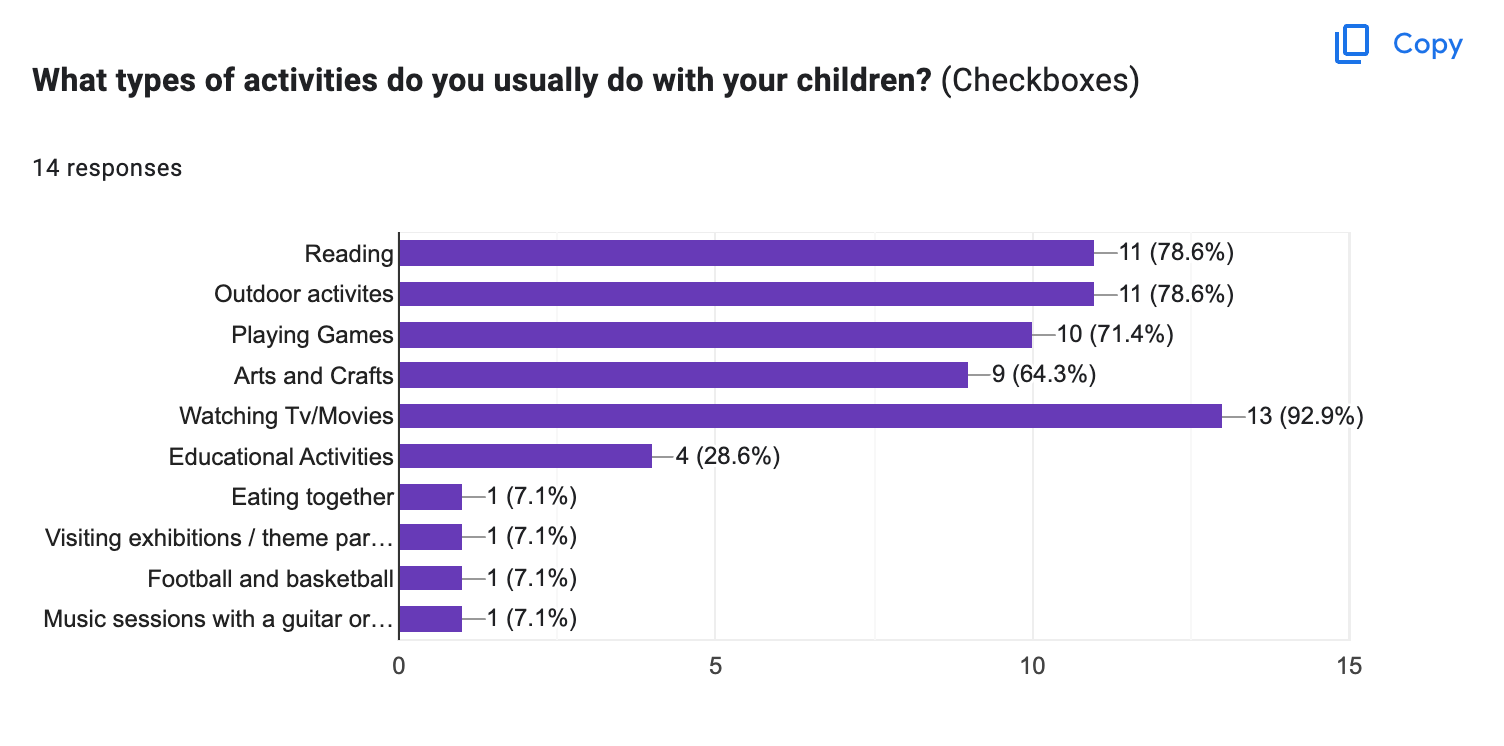*Start: June 2024
*End: August 2024
Readings: The Cyber Effect, The Impact of Identity, Discursive Design, The Act of Creative Being
Research Methodologies: Interviews, Surveys, Qualitative, Quantitative and Experiments.
Topic: Rising Screen Time Among People and Specially Children
Insights: 1. A scenario where a screen restriction policy is implemented to combat the negative effects that have become extreme due to excessive screen time.
2. A new line of clothing equipped with a posture corrector and sensors speculatively made by Apple that tackles the problem of spinal posture among young children who have excessive screen time.
3. Two biological treatments that could be undertaken in the near future to combat screen time issues and its effects to our eyes. Tear duct implants and Neurostimulation Implants for Blinking Regulation.
Abstract
This proposal suggests creating a graphic novel through Instagram reels and possibly as a physical book. The goal is to push the limits of visual storytelling by giving a non-living abstract entity human characteristics and putting it in a dystopian future. The story will follow this entity's journey to find its identity and purpose in a world where the lines between organic and inorganic, real and surreal are blurred. For example, I could envision a dystopian future in which cities have evolved into living entities with their own distinct qualities, desires, and ambitions, seeking to establish their place in the world. This project will explore critical theories related to posthumanism, identity, and existentialism, looking at how non-living entities could be perceived as 'living' in the future.
The research questions for this project are: How can visual storytelling be adapted to short-form social media formats like Instagram reels while maintaining narrative depth and engagement? In what ways can giving human-like characteristics to non-living abstract entities challenge and expand contemporary understandings of identity and existence in dystopian narratives? What is the role of format (digital vs. physical) when it comes to graphic novels that explore complex, abstract themes? The project will consist of several Instagram reels, each serving as a standalone yet interconnected part of the larger narrative. The reels will use visual art, minimal text, and sound design to convey the story. This choice of medium reflects the growing trend of consuming digital content in brief, visually driven segments, especially among younger audiences. The potential physical book will explore how the narrative can be expanded and enriched in a traditional format, providing a tactile, immersive experience that contrasts with the digital version.
Posthumanism will be the central theme of this project, as it allows for exploring what defines 'life' and 'consciousness' in entities that traditionally lack these characteristics. The narrative will challenge the anthropocentric view of identity and existence, proposing a future where the distinction between living and non-living is redefined. Existential themes will be explored through the protagonist’s quest for identity, reflecting existentialist ideas of self-construction in a seemingly meaningless world. Theories of media psychology will also be integrated to examine how different formats (digital and physical) influence the psychological impact and interpretive depth of the story.
The literature that will inform this project includes works on posthumanism such as Cary Wolfe's "What Is Posthumanism?", which explores the philosophical implications of posthumanist thought. Additionally, Scott McCloud’s "Understanding Comics: The Invisible Art" will provide foundational knowledge on how visual and textual elements combine to create meaning in visual narrative construction. The study of digital media consumption patterns and their psychological effects will be supported by insights from Nicholas Carr's "The Shallows: What the Internet Is Doing to Our Brains." The project will also draw upon dystopian literature classics, such as George Orwell’s "1984" and Aldous Huxley’s "Brave New World," to frame its dystopian setting and themes. The project aims to contribute to the field of graphic novels and visual storytelling while also sparking thought and discussion about the changing definitions of life and identity in our increasingly digital and posthuman future. Through its innovative use of Instagram reels, it aims to challenge traditional narrative formats and explore new possibilities in storytelling.
Key Themes from Abstract
1. Identity
2. Posthumanism
3. Lines between real and unreal
4. Growing up in the digital age
Initial Data Nodes
In recent years, the use of iPads and other digital devices by toddlers as a form of distraction has become increasingly common, primarily due to busy parental schedules. Here are some key statistics and findings on this topic:
1. High Ownership and Usage:
A significant majority of young children have access to digital devices. Nearly 80% of children have access to an iPad or similar tablet, and many start using these devices at a very young age. By the age of 1, about 44% of children are already using mobile devices daily, and by age 2, this number jumps to 77% (AAP Publications) (What to Expect). More than four in five children own at least one screen-based device, with the average child owning three digital devices. Personal ownership of gadgets can start as young as four years old (Physorg).
2. Parental Perspectives and Challenges:
Parents often use these devices to keep their children occupied during times when they need to focus on other tasks. This can include situations like waiting rooms, car rides, or when parents are working from home (What to Expect). Many parents acknowledge the challenges that come with managing their child's digital habits. Approximately 73% of parents and grandparents believe it has become harder to control their children's use of digital technology since they have their own devices (Physorg). Digital devices are also a source of conflict within households, with 65% of parents noting that negotiating digital technology use often leads to disagreements (Physorg).
3. Educational and Social Impacts:
There are both pros and cons to this trend. Some studies suggest that educational apps on iPads can improve children's vocabulary and math skills. Additionally, for children with cognitive delays, certain apps can boost language use and social interaction (What to Expect). However, excessive screen time is linked to attention and conduct problems. Screen time needs to be balanced with other activities that involve physical play, social interaction, and creative activities (What to Expect).
In conclusion, while digital devices can be convenient tools for parents to manage their busy schedules, it is essential to monitor and limit their use to ensure a balanced and healthy development for children.
The early results of a landmark study on brain development by the National Institute of Health show that children who spent more than two hours a day looking at a screen got lower scores on thinking and language tests. Research from the University of Texas suggests the mere presence of your smartphone reduces cognitive capacity and test-taking brainpower.
Primary Research
After conducting tests and doing some reading, I grew increasingly confident about my topic. To progress according to my schedule, I initiated primary research by joining a Facebook group where parents can inquire about their babies' health to Paediatricians. I reached out to two Pediatricians, whose names I cannot reveal for privacy reasons. Engaging in discussions with them provided valuable insights and significant guidance for my project.
During conversations with two pediatricians, I gained valuable perspectives on the impact of digital devices on children’s health and development. The first pediatrician expressed significant interest in the direction of my project, highlighting a growing concern "I see severe cases of eye strain almost every week now, and it’s alarming how normalized the use of multiple devices has become in households." This insight underscores the increasing frequency of device-related health issues in children and the concerning trend of parents accepting these devices as part of everyday life. The second pediatrician offered a more critical perspective, expressing concern about the broader societal impacts of technology. He reflected on how large corporations like Apple and Google have altered the essence of childhood, shifting it from a simple experience of growing up to one defined by the number of gadgets a child owns and how they compare themselves to their peers. He also critiqued social media for exacerbating identity issues among children, mocking how it has become a platform that fuels insecurity and self-comparison rather than genuine connection.
After gathering insights from doctors and experts, I created a Google Forms questionnaire to capture parents' perspectives. I reached out to my boss, whom I work for as a part-time graphic designer and who is a mother of a teenage child, she completed the survey and shared it with other parents. This effort yielded 14 responses, which revealed that most parents spend significant time with their children watching TV and movies—an activity typical in many households. The survey also highlighted various creative strategies parents use to manage their children's screen time.
Several responses from parents made interesting arguments, strategies and views about their children’s screen time and how they feel about it. This exercise came to be quite useful for my project journey as some parents didn't have a negative view of their children’s screen time but believed it to be useful which is true if kept in balance.
Critical Theory 1
Albert Bandura's Social Learning Theory (cited in Cherry 2024) asserts that individuals acquire behaviours, attitudes, and emotional responses by observing others. This theory underscores the significance of modelling and imitation in the learning process. In early childhood, children are particularly impressionable, and their environment plays a crucial role in shaping their development. They often mimic behaviours they observe around them, including those depicted on digital screens. Observational learning, a key component of Bandura's theory, involves children learning by watching and imitating the actions of their parents, peers, and characters from digital media. This form of learning is essential for the development of social behaviours, emotional responses, and problem-solving skills. For instance, when children observe positive behaviours, such as sharing and cooperation, they are likely to emulate these actions. Conversely, exposure to negative behaviours, such as aggression or dishonesty, can lead to the adoption of these undesirable traits.
Bandura identified four core processes in observational learning: attention, retention, reproduction, and motivation. First, a child must pay attention to the behaviour being modelled. Digital media, with its captivating visuals and engaging content, effectively captures children's attention. Next, the child must retain the observed behaviour, storing it in memory. This retention is facilitated by the repetitive nature of digital content. Then, the child must be able to reproduce the behaviour, translating the observed actions into their conduct. Finally, the child needs the motivation to adopt and perform the behaviour, which is often influenced by perceived rewards or consequences (cited in Cherry 2024).
Attachment is a crucial emotional bond between individuals, particularly between children and their caregivers. This bond, as theorized by Bowlby (cited in Cherry 2023), has a long-lasting impact on a child's life. He proposed that attachment serves the purpose of keeping the infant close to the mother, thereby increasing the child's chances of survival. According to Bowlby, attachment is not merely a learned behaviour, but a result of evolutionary processes. Throughout history, children who stayed close to an attachment figure were more likely to receive comfort and protection, thus increasing their chances of survival. Secure attachment plays a vital role in a child's emotional and social development. However, the increasing use of digital devices can potentially interfere with the formation of these secure attachments.
https://www.youtube.com/watch?v=zugBuwgLgcc&t=560s
https://www.youtube.com/watch?v=6bCCDGZyC0I
Research Insight 1



Michel Foucault first introduced the concept of biopolitics in the late 1970s, aiming to explore new forms of power that emerged in the 18th and 19th centuries. Biopolitics, according to Foucault, focuses on how human life at the population level became a political issue in Western societies, moving beyond traditional Marxist views of power and the State. Foucault’s approach was influenced by historical events, including disillusionment with Marxism, political shifts in Europe, and the rise of neoliberalism. He critiqued traditional Marxist theories of the State as overly simplistic and deterministic, instead proposing that power operates through diverse forms, including sovereignty, discipline, and biopolitics.
Foucault argued that biopolitics emerged with the development of new statistical tools and techniques that allowed populations to be measured, classified, and managed. This led to populations understanding themselves through these categories, which were often linked to racial, colonial, and genocidal practices. Foucault’s key innovation was revealing how power operates not just through coercion, but also through practices of security and the management of freedom within liberal governmentality. He saw freedom as a crucial aspect of power, complicating Marxist notions of alienation and highlighting the limitations of 20th-century communism in achieving a governmentality that recognizes freedom as a biopolitical category.
Foucault’s analysis challenges traditional Marxist views but does not provide a clear path for a posthumanist biopolitics. Critics argue that while Foucault’s framework is insightful, it lacks tools for understanding the interplay between biopolitics and capitalism, especially in the context of contemporary issues like pandemics. Other theorists suggest that both Foucault and Marx’s ideas need to be extended to fully grasp the complexities of biopolitics today.
I conducted an in-depth study on contemporary examples of extreme political control over people’s lives. This exploration revealed several alarming instances of authoritarianism and the curtailing of freedoms. In China, the Communist Party exerts tight control over social media, using it as a tool for mass surveillance and censorship. The "Great Firewall" restricts access to global information, and platforms like WeChat and Weibo are monitored, often leading to the arrest of individuals who express dissenting opinions. This form of digital authoritarianism is a powerful example of how governments can control public discourse and suppress freedom of speech.
In the United States, the rise of far-right extremism has also led to significant concerns about political control. Instances of political violence, voter suppression efforts, and the spread of misinformation have undermined democratic processes. The January 6th Capitol insurrection is a stark example of how political extremism can threaten democratic institutions and civil liberties.
In my home country of India, political control has become an increasingly pressing issue. A particularly striking example occurred in the region of Jammu & Kashmir. In August 2019, the Indian government revoked the special status of Jammu & Kashmir, a move that led to widespread unrest and political tension between India and Pakistan. In response, the government imposed a severe crackdown, including a communications blackout that left millions of residents without internet access for months. This restriction not only stifled freedom of expression but also severely impacted everyday life, cutting off people from vital information and communication during a time of crisis. This is just one of many examples in India where political control has silenced voices and restricted freedoms, leaving citizens feeling powerless and marginalized.




Interviews & Surveys
During conversations with two pediatricians, I gained valuable perspectives on the impact of digital devices on children’s health and development.
The first pediatrician expressed significant interest in the direction of my project, highlighting a growing concern "I see severe cases of eye strain almost every week now, and it’s alarming how normalized the use of multiple devices has become in households." This insight underscores the increasing frequency of device-related health issues in children and the concerning trend of parents accepting these devices as part of everyday life.
The second pediatrician offered a more critical perspective, expressing concern about the broader societal impacts of technology. He reflected on how large corporations like Apple and Google have altered the essence of childhood, shifting it from a simple experience of growing up to one defined by the number of gadgets a child owns and how they compare themselves to their peers. He also critiqued social media for exacerbating identity issues among children, mocking how it has become a platform that fuels insecurity and self-comparison rather than genuine connection.




This research explores the impact of prolonged screen time on eye health and examines both current solutions and potential future interventions.
Current Solutions:
Blue Light Filter Glasses: These are designed to protect the eyes from blue light emitted by screens. However, many doctors argue that their effectiveness is minimal, offering limited protection that may not significantly impact eye health.
Cosmetic Procedures: Various procedures, such as cheek slimming, nose reshaping, lip fillers, and LASIK surgery, are mentioned as options for altering appearance or correcting vision.
Blinking and Screen Time:
Reduced Blinking: When people, especially children, focus on screens for long periods, they tend to blink less frequently. Normally, a person blinks 15-20 times per minute, but this rate can drop significantly during screen use. Blinking is essential for spreading tears over the eye surface, which keeps them moist and clears away irritants. Reduced blinking can lead to dryness and irritation of the eyes.
Health Effects of Reduced Blinking:
Dry Eyes: This condition can cause symptoms such as redness, itching, burning, and a gritty feeling in the eyes. Chronic dry eyes can lead to more serious problems, including inflammation and damage to the eye's surface.
Eye Strain (Digital Eye Strain or Computer Vision Syndrome): Prolonged screen use can lead to eye discomfort, headaches, blurred vision, and difficulty focusing, which may affect a child's ability to concentrate on other tasks.
Potential Impact on Vision Development:
Myopia (Nearsightedness): There is some evidence suggesting that excessive screen time, especially when combined with insufficient outdoor activity, may contribute to the development of myopia in children.
Focus Issues: Overuse of screens can cause the eye muscles to become accustomed to focusing on close objects, potentially leading to difficulties when shifting focus to distant objects.
Future Possibilities:
The research speculates on future biological interventions, such as surgeries to implant devices that regulate blinking or enhance tear production. These innovations could help address issues related to dry eyes and other eye diseases caused by insufficient blinking and lubrication.
In summary, while current solutions like blue light filter glasses offer minimal protection, the research highlights significant concerns about the effects of reduced blinking and excessive screen time on eye health. It also envisions future technological interventions that could help mitigate these issues.